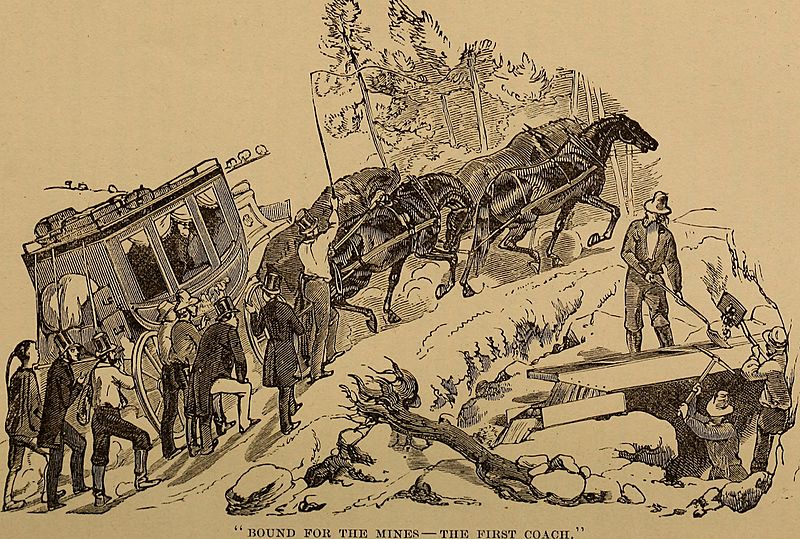Image: The hand-book of Wyoming and guide to the Black Hills and Big Horn regions (1877) (14780079804)

Description: Identifier: handbookofwyomi00stra (find matches) Title: The hand-book of Wyoming and guide to the Black Hills and Big Horn regions Year: 1877 (1870s) Authors: Strahorn, Robert E. (Robert Edmund), 1852-1944 Subjects: Publisher: Cheyenne, (Chicago, Knight & Leonard, printers) Contributing Library: The Library of Congress Digitizing Sponsor: The Library of Congress View Book Page: Book Viewer About This Book: Catalog Entry View All Images: All Images From Book Click here to view book online to see this illustration in context in a browseable online version of this book. Text Appearing Before Image: thus beencrippled for nearly a decade. The recent impetus which theseinterests have received is due largely to the military expeditionunder Custer, made in the year 1875, «which gave the publicsome glimpses of the rich deposits of gold in the Black Hills. Although the Black Hills are the grand central objectivepoint of treasure-seeking immigration, they are by no means theonly point in or near Wyoming sought, and, within the currentyear, to be prospected for gold and silver. Many already, fromthe east and from the west, some with capital and some without,are going into the Medicine Bow mineral districts, on the headwaters of the Laramie and Platte, in the Bock Creek, Elk Moun-tain, Brush Creek, Centennial, Last Chance and other districtssouthward to the bprders of Colorado, these all being in the samemineral belt which, in Colorado, has yielded so much treasure.Others are seeking, again, the Sweetwater region, from whoserich mines prospectors and miners were driven by hostile Indians Text Appearing After Image: MINES AND MINING. 59 in 1869, and from which, by similar causes, they have been keptuntil the present time. From this very region I hear of com-panies numbering several hundred each moving northwardtoward the Big Horn. All indications point to the early dis-covery and development of the most prominent mineral-produc-ing localities in Wyoming. We shall, in this chapter, refer more especially to the districtsin the southern and central portions of the Territory, leaving theBlack Hills and Big Horn regions for special articles. Amongthe most important gold and silver belts in Wyoming is that inthe southern part tributary to Laramie City. The region isalmost wholly undeveloped, and consists, first, of the districts inor near the Medicine Bow Mountains, including Rock CreekPlacer Mining district, Centennial, Sheep Mountain, Big Lara-mie and Last Chance, or Douglass districts; and second, of theNorth Park region, extending across the borders of Colorado toHahns Peak and the Rabbit Ear range Note About Images Please note that these images are extracted from scanned page images that may have been digitally enhanced for readability - coloration and appearance of these illustrations may not perfectly resemble the original work.
Title: The hand-book of Wyoming and guide to the Black Hills and Big Horn regions (1877) (14780079804)
Credit: https://www.flickr.com/photos/internetarchivebookimages/14780079804/ Source book page: https://archive.org/stream/handbookofwyomi00stra/handbookofwyomi00stra#page/n64/mode/1up
Author: Strahorn, Robert E. (Robert Edmund), 1852-1944
Permission: At the time of upload, the image license was automatically confirmed using the Flickr API. For more information see Flickr API detail.
Usage Terms: No known copyright restrictions
License: No restrictions
License Link: https://www.flickr.com/commons/usage/
Attribution Required?: No
Image usage
The following page links to this image:

